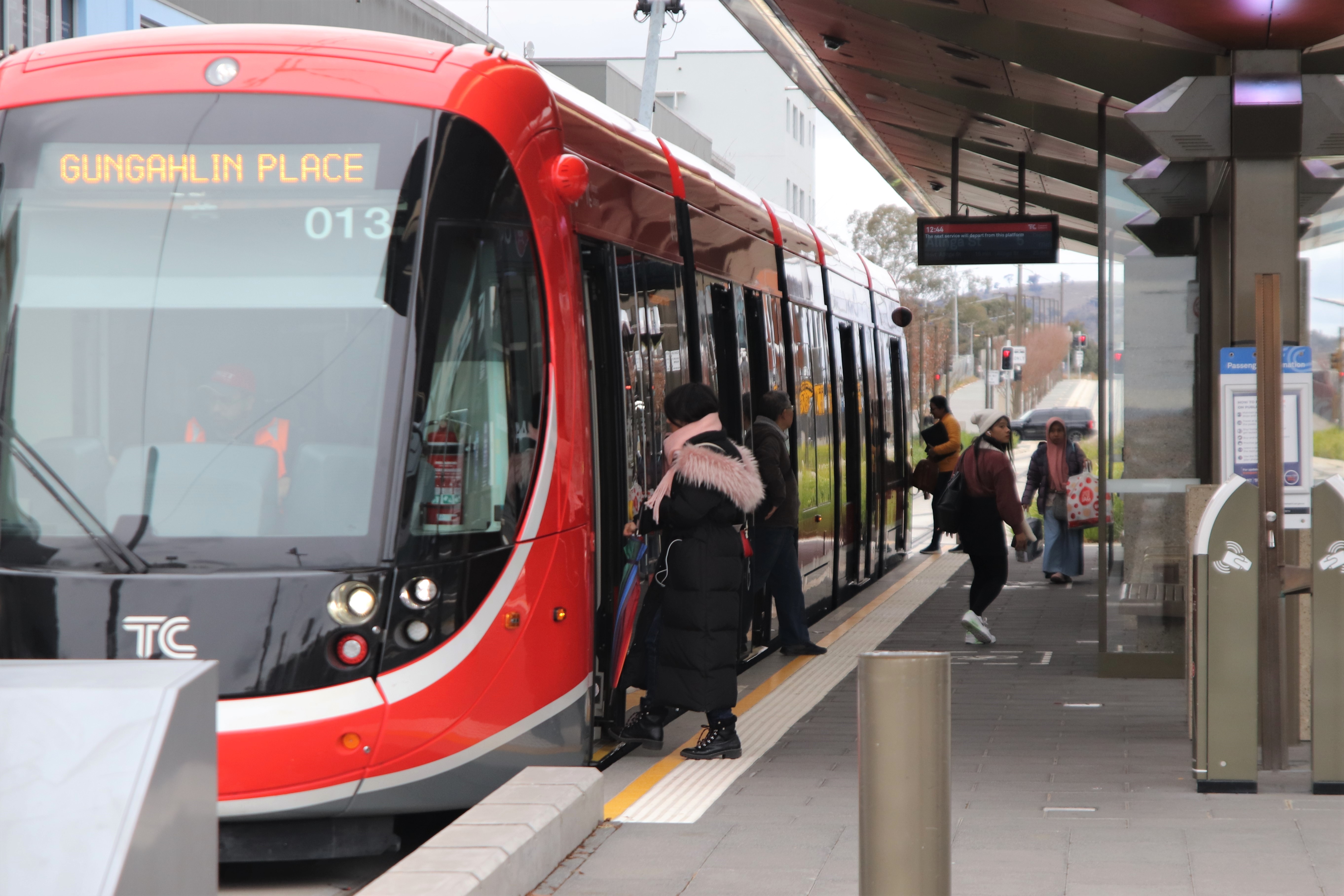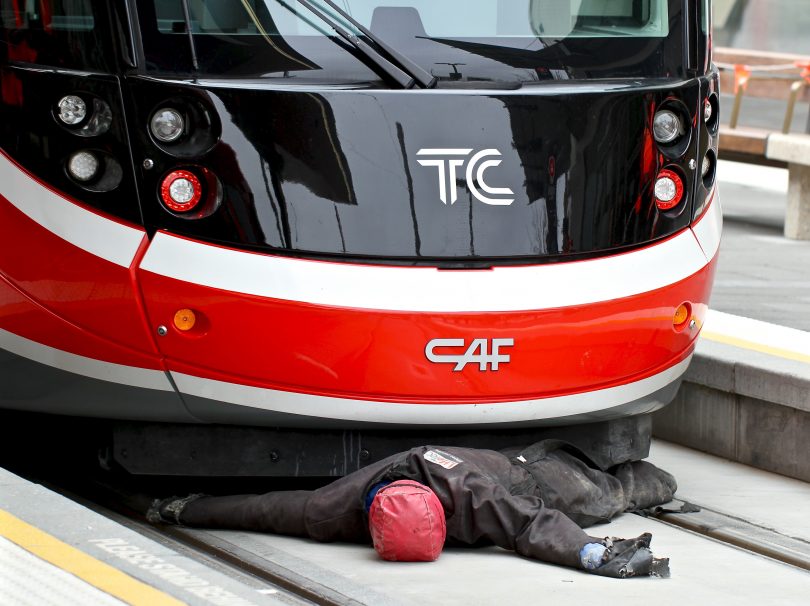
A mannequin lies trapped under a light-rail vehicle during the exercise at Gungahlin on Tuesday morning. Photos: Michael Weaver.
The lifeless limbs of a mannequin lay trapped under a light-rail vehicle at the Gungahlin terminal in a dramatic display to highlight the need for greater safety around Canberra’s light-rail network.
The safety training exercise brought one light-rail vehicle to a halt as emergency services sprung into action in a real-time exercise involving Transport Canberra, Canberra Metro Operations, ACT Policing and ACT Ambulance and Fire and Rescue members.
It comes as new footage has been released showing numerous near-misses, from cars performing illegal u-turns along Northbourne Avenue, distracted pedestrians walking in front of oncoming light-rail vehicles, to cars and bicycles travelling on the light-rail tracks.
https://www.facebook.com/TransportCanberra/videos/875090156349225
As part of Rail Safety Week, the safety training exercise that was two months in the making saw emergency crews ‘rescue’ a pedestrian trapped under a light-rail vehicle.
The exercise even included drama students from Gungahlin College who played passengers with wrist, head and shock injuries after emergency brakes had been applied.
Bus and light rail services operated as normal, while some pedestrian areas were closed off and Gungahlin Place was restricted to buses only.
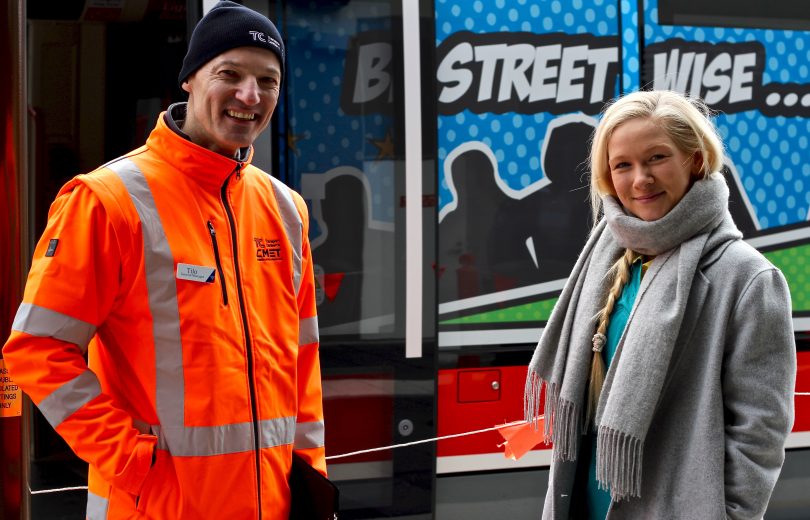
General manager of Canberra Metro Operations Tilo Franz and rail safety ambassador and Paralympian Vanessa Low.
Canberra’s rail safety ambassador and German-born Australian Paralympian Vanessa Low lost both her legs in 2006 when she was 15 after being hit by a train in Stuttgart. She said the exercise was a chilling reminder of how easily an accident involving a light-rail vehicle can occur.
“I was standing at a train station on my way to see friends when a couple of people started pushing and pulling and trying to be the first one to get on the train,” Ms Low recalled.
“I didn’t pay proper attention and got pushed and ended up in front of the approaching train.
“I spent the next six months in hospital fighting for my life and ended up losing both of my legs. It took me another two years to get back to walking and enjoying life again.”
Ms Low’s next steps were to Australia where she met her husband and has since represented Australia as a long-jumper in the Paralympics.
“The accident had a big impact on all of my life and took me a long time to return back to what I love which is sport,” she said.
“A lot of people don’t understand how great an impact an incident like this has, but a lot of these incidents end in fatalities.”
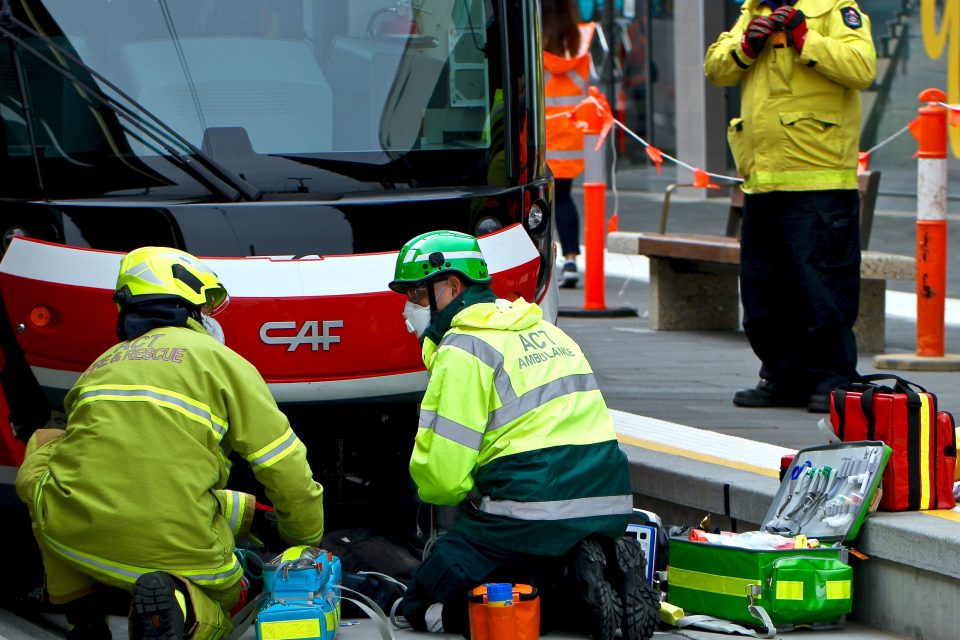
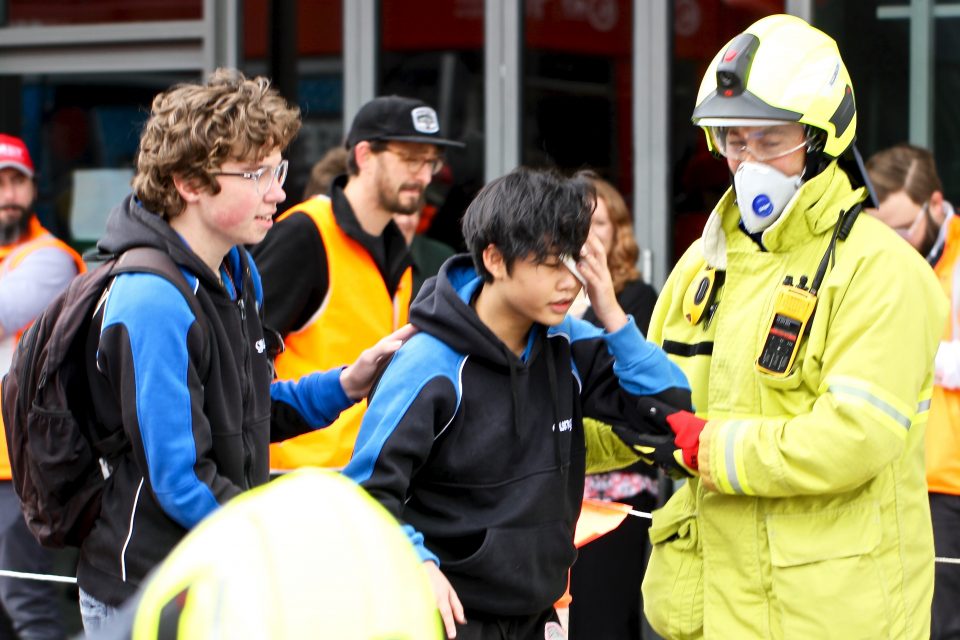
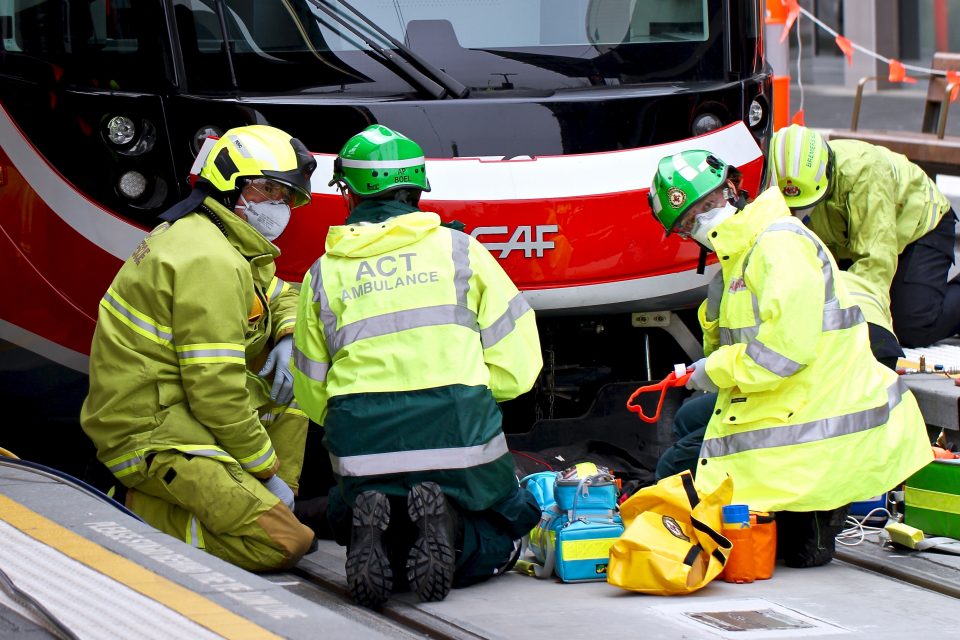
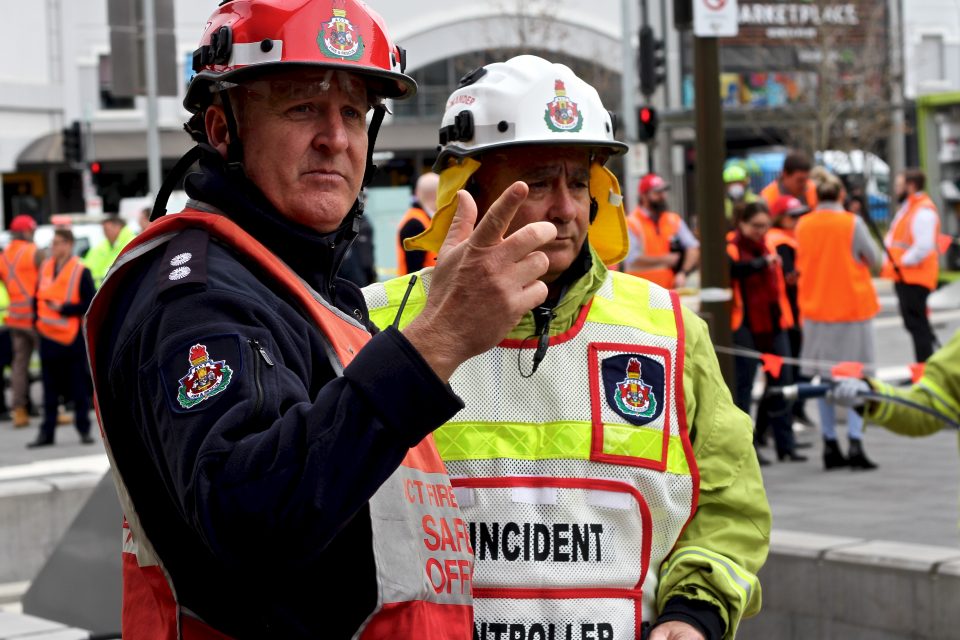
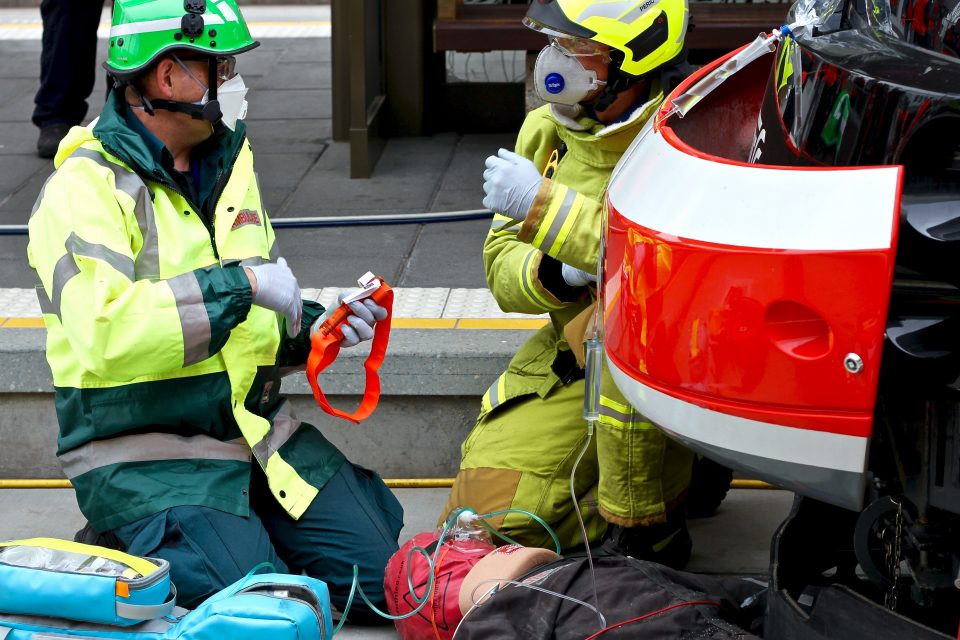
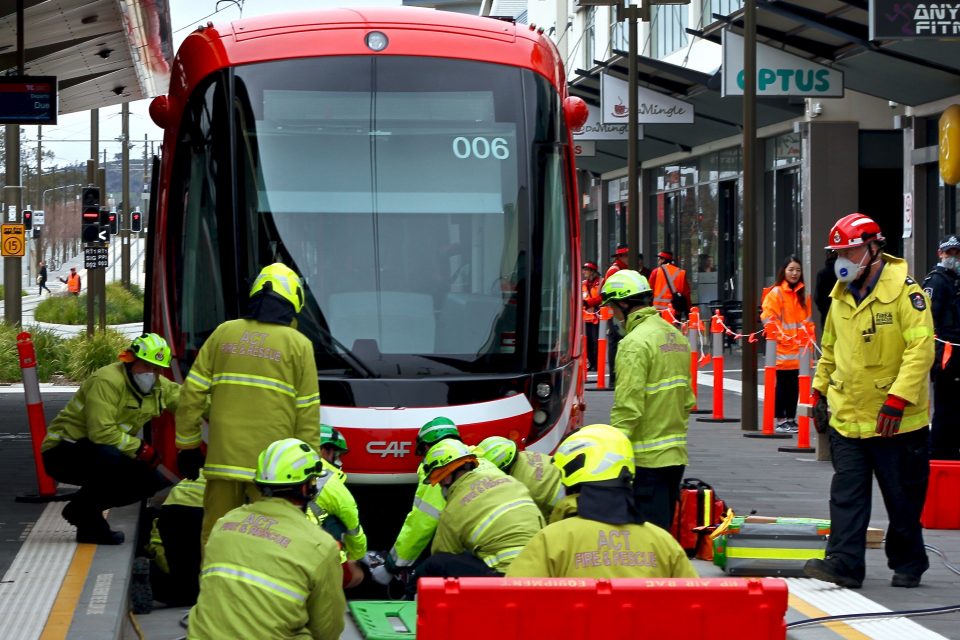
General manager of Canberra Metro Operations Tilo Franz said the simulation provided critical training for an incident that he hopes doesn’t become a reality.
“We see lots of people not being aware of this kind of situation, or not knowing how to deal with it. We’ve still had a few incidents or near-miss occurrences in Canberra, so we want to raise awareness of how to deal with light-rail and not to a situation such as what happened to Vanessa,” Mr Franz said.
Mr Franz singled out distracted pedestrians on their mobile phones – especially kids – as being at the greatest danger of being struck by a light-rail vehicle.
He said operators often see people ignoring traffic lights, crossing in front of the light-rail vehicles and incorrectly estimating the distance at which a light-rail vehicle is approaching.
“Light-rail vehicles travel between 50-70 km/h through intersections and they need a longer time to brake because they have steel wheels on steel rails which obviously needs a longer braking distance than a car.
“This is why we have gone out into the public to demonstrate how we would deal with a situation to also make the public aware that what we are doing and how we are preparing for the worst. Hopefully, it will never come.”
Original Article published by Michael Weaver on The RiotACT.






